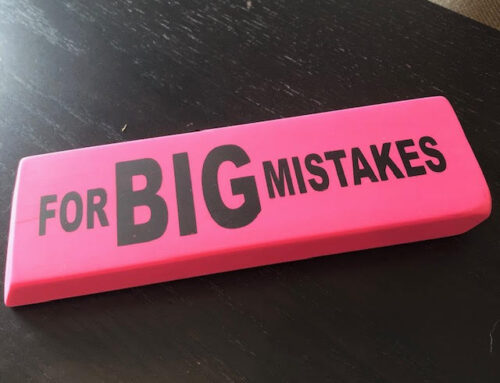We have an abundance of choice when it comes to setting goals and dreaming up our next great achievement. This is a gift.
But if you’re anything like me, this gift can sometimes lead to over-committing yourself.
This is when you turn to your Main Action Plan, the foundation of productivity.
At Clear Concept, we call this productivity tool your MAP because it’s your guide to prioritizing and getting things done. Your MAP serves three essential functions:
- Captures work: your MAP allows you to record all of your tasks, deadlines, goals and commitments in one central location
- Manages expectations (yours and others): your MAP helps you to gauge your capacity and evaluate new deadlines and commitments
- Prioritizes opportunities: your MAP lets you maintain focus on your core priorities, while tracking all tasks associated with those priorities
Simply put, your MAP is how you decide what to focus on now versus later.
How does it work?
When you build your MAP, you start by prioritizing your work within categories. Grouping your work by categories helps it feel more contained, and this helps you feel less overwhelmed.
We recommend you categorize your work as:
- Core priorities and future priorities
- Supporting tasks
- Distracting tasks
What belongs in each category?
1 – Core priorities are your top three initiatives or types of work. Consider all of your projects, initiatives and responsibilities. Of those, what are your top three priorities? Your most important goals? Your most essential work? These can be discrete projects such as launching a new product, or recurring streams of work like supporting your team.
The fastest and most effective way to work is to concentrate your focus on three core priorities.
Yes, you can always add more to your list, but we all know what happens when you try to tackle too many priorities at once. This dilutes your impact, delays progress and leads to feeling overwhelmed. Nobody wants that.
Tip: Your goal is not to complete your list. You will always have a list. Your goal is to prioritize what is on your list.
Future priorities are all initiatives or types of work currently on hold while you focus on your three core priorities. Today’s future priorities are busy getting ready to be promoted to one of your core priorities when you are ready to shift your focus.
Even though you may not be focused on these initiatives yet, you still need a place to track them. Clearly listing our future priorities serves as an important reminder that we are not investing time in them right now. Any time consumed by future priorities squanders time that should be dedicated to our core priorities.
2 – Supporting tasks are your necessary operational and administrative tasks. You do need to dedicate some time to supporting tasks – but not at the cost of time dedicated to your core priorities.
3 – Distracting tasks will vary depending on your role but, essentially, they include all low-value tasks that don’t align with your key goals or values. For example, social media may be a distracting task for you, but it is most likely a core priority for your marketing colleague.
I don’t recommend tracking distracting work directly onto your MAP. After all, it doesn’t make sense to commit to distracting tasks. We simply want to be aware of which tasks are distracting, so we can move to eliminate them from our day.
Once you have clearly established your priorities, I encourage you to add a compelling “why” statement to each category.
Answering the following questions will help you craft your “why” statements:
- Why is this type of work important to you?
- What motivates you to invest time in this work?
- What is your overall goal or vision?
A compelling “why” statement will:
- Keep you inspired during challenging times
- Keep you focused on activities and decisions that support your overall purpose
- Help you feel less overwhelmed by all the details, and
- Ground your work in a compelling sense of purpose and meaning, so you can find or reclaim the passion for what you do – and why you do it so well
Admittedly, it can be challenging to find meaning in every task we do. I like to think of this concept as taking your car for an oil change: you don’t get much out of the activity on its own, but it’s vital if you enjoy having a car that drives well.
Do certain tasks help you sharpen your skills? Better serve your clients? Support your team?
When we link a mundane chore with a bigger goal, it is easier to see the value in the minutiae. We start to see how it is a critical step in our overall journey. Find the meaning in what you’re doing, and you’ll be amazed at all you can do.
When faced with competing priorities and pulled in multiple directions, as we all are, we are inclined to feel distracted, disorganized and stressed.
My MAP is the tool I use to help me manage overload while still pursuing all the things I love. I hope it inspires you to keep yourself on track and do your best work.
Ready to set up your own MAP? Contact us for a downloadable template.







Leave A Comment